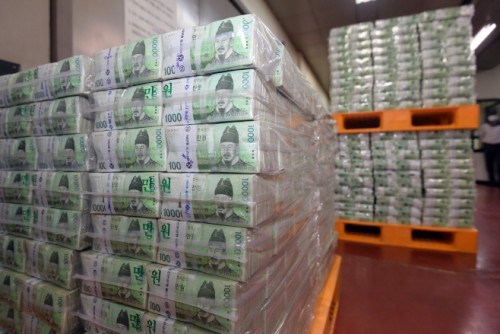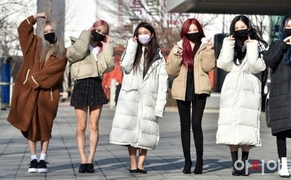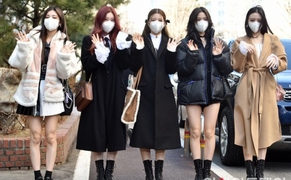 |
| Source: Yonhap |
AsiaToday reporter Lee Ji-sun
An additional 21 trillion won was released in May alone in the market. The total money supply is close to 3,400 trillion won. Although the pace slowed down from the previous month, the absolute increase was still large compared to last year. The number of stock trades and housing transactions increased thanks to low interest rates, and the demand for household living funds has also increased. The continued overflowing liquidity is fueling concerns about inflation.
The country’s M2 money supply reached 3,385 trillion won ($2.95 trillion) in May, up 0.6 percent from April, according to the data released by the Bank of Korea (BOK) on Monday.
M2 is a broad measure that shows how much money is being calculated in the market. It includes all liquid assets, such as cash and checking deposits, as well as less liquid forms, such as savings deposits, money market securities and mutual funds.
The on-month growth slowed down from the fastest record of 1.5 percent in the previous month, but M2 grew 11 percent against a year earlier in May, the BOK said. The growth rate has been in the 10 percent range for the fifth consecutive months this year.
“Although the on-month growth slowed down in May, the money supply increased sharply until the previous month and there was a return to some extent,” an official from the central bank said. “In particular, the decline of growth could be temporary since waiting funds increased largely due to the SKIET public offering in April.”
As the amount released to the market continues to increase, there are also concerns about inflation, where asset prices continue to rise. This is because financing in response to real estate and stock-related investment demand led to an increase in liquidity. The average M2 balance of households and non-profit organizations increased by 6.7 trillion won from the previous month due to continued demand for housing and stock trading funds, and other financial institutions increased by 15.7 trillion won due to the inflow of stock trading funds.
Some analysts say that households and businesses’ demand for borrowing has increased as the base interest rate remains at the lowest level. “As the low interest rate trend continues and there are forecasts for interest rate hike in the future, households and companies could take out larger bank loans,” a BOK official said.
#money supply #Bank of Korea #M2
Copyright by Asiatoday
Most Read
-
1
-
2
-
3
-
4
-
5
-
6
-
7





















